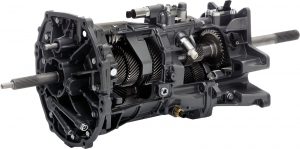The BuyingAdvice.com Transmission Glossary

There’s no need to fumble around the internet looking for wikipedia pages. Our transmission glossary has everything you need to know in it, if you’re looking for information about car transmission systems.
Automatic Transmission
Automatic transmission is a mechanical system that changes the vehicles gears without the driver’s help. The driver simply pushes the gas pedal and the car does the rest. Changing gears helps the car accelerate more effectively.
Manual Transmission
A vehicle with manual transmission must change gears with the help of the driver. The driver presses the clutch pedal and moves the gearshift, which is usually to the right of the driver’s seat, and then accelerates. For a tutorial, check here.
Semi-Automatic Transmission
Some cars have “paddle-shift transmissions.” Paddles or buttons are mounted near the steering wheel and are pressed or pulled to change gears. The operator only needs one foot, for the gas pedal.
Dual-Clutch Transmission
Sometimes called “twin-clutch” or “double-clutch,” a dual-clutch transmission functions like two automatic transmission systems. Usually, it is used in fully automatic mode. Driving a vehicle with a dual-clutch transmission is like driving one with a standard automatic transmission. The advantages of dual-clutch transmissions include faster shifting (for better performance) and improved fuel efficiency.
Limited-Slip Differential
Limited-Slip Differentials (LSDs) provide the advantage of more power distribution to wheels that have traction. The basic benefit is less power being wasted on wheels that do not have traction. However, the word “limited” refers to a limited benefit. At some point, as the driver compresses the gas pedal, a wheel that cannot get traction will begin to rotate faster.
Locking Differential
A locking differential ensures wheels on an axle rotate at the same speed, regardless of the traction they have. This is generally used for off-road and snowy conditions. 4X4 vehicles have three differentials that ensure all wheels receive the same torque. Many off-road vehicles allow the differential lock to be engaged and disengaged, as it’s not useful on roads.
Standard Differential
In conditions where wheels have very different traction, a standard differential sends more power to the wheel with lower traction. This is a disadvantage in snowy or off-road conditions. However, on roads, all wheels should have roughly the same traction. In that case, a standard differential allows the wheels to rotate at different speeds, which naturally happens when vehicles turn. So, the standard differential prevents unnecessary tire wear and fuel consumption.
Drive By Wire
Vehicles with drive by wire capability need no throttle cable. It’s also called “fly by wire.” The technology uses electronic parts, sensors and actuators to control the vehicle’s acceleration. When humans control this aspect of the engine, there is often an over-usage the gas pedal. Electronic parts can ensure the quickest acceleration without wasting gas and causing unnecessary emissions. They also provide an output of data that is easy to tap into.
Now that you’ve reviewed our transmission glossary, you’ll be ready to make the right choice when you purchase your next vehicle. In addition to knowing about transmissions, do your part to find the best deal. Let us help.
Search local inventory and get free quotes for any vehicle you choose. You will also receive unpublicized discounts when available. Click here!

